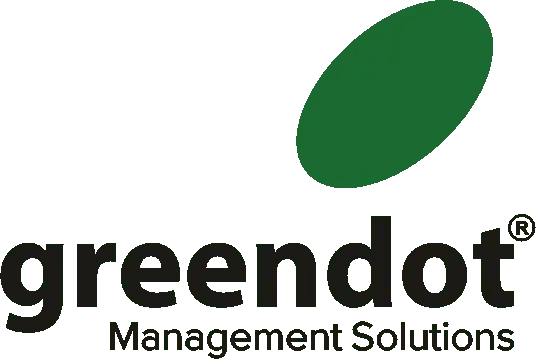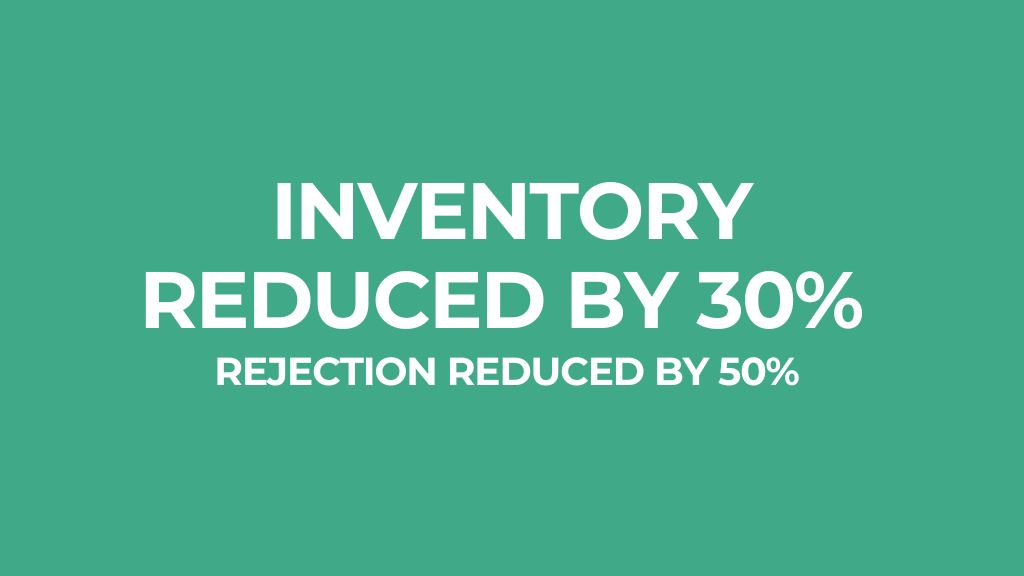Lean manufacturing in corrugation industries - Transforming Performance
Trident Paper Box Industries has established itself as a leading corrugated box manufacturer, renowned for its commitment to delivering high-quality packaging solutions. With expertise in producing Corrugated Boxes, Corrugated Sheets, and various types of cardboard corrugated cartons, Trident Paper Box Industries takes pride in its craftsmanship and dedication to meeting customer needs.
This case study highlights the company's journey towards improved performance and efficiency, resulting in significant benefits such as reduced inventory, decreased rejection rates, improved payment cycles, optimized space utilization, and increased sales.
Challenges Faced by the Client
- High Rejection: The client experienced a significant number of rejected products, which led to increased costs, wastage of resources, and delays in order fulfillment. The causes of high rejection could be attributed to various factors, including poor quality control measures, inadequate employee training, faulty equipment, or outdated production processes. This challenge not only affected the client's bottom line but also tarnished there reputation in the market.
- Low Productivity: The client faced low productivity levels, resulting in inefficient use of resources, extended production cycles, and reduced output. Factors contributing to low productivity may include ineffective workflow systems, improper resource allocation, lack of employee engagement, or outdated machinery. These issues hindered the client's ability to meet customer demands promptly and efficiently, leading to lost business opportunities and decreased customer satisfaction.
- Low Profit: The client experienced a decline in profitability, which can be attributed to several factors. In addition to the challenges mentioned above, other potential causes may include rising operational costs, ineffective pricing strategies, market competition, or suboptimal inventory management. The client needed to identify and address these issues to enhance profitability, sustain their business, and invest in future growth opportunities.
- Limited Space: The client faced a constraint in terms of available workspace, which affected their operational efficiency and scalability. The lack of adequate space hindered their ability to optimize production processes, accommodate new equipment, or expand their product portfolio. It became crucial for the client to explore strategies to optimize space utilization and identify opportunities for expansion or relocation, if feasible.
Implementation process of kaizen
The implementation process of Kaizen involves several key steps aimed at fostering continuous improvement within an organization. Here is a general outline of the Kaizen implementation process:
- Establishing a Kaizen Culture: The first step in implementing Kaizen is to establish a culture of continuous improvement throughout the organization. This involves creating awareness among employees about the benefits of Kaizen and fostering a mindset that encourages participation, collaboration, and a commitment to continuous improvement.
- Formation of Kaizen Teams: Kaizen teams, also known as improvement teams or quality circles, are formed to identify and address improvement opportunities within specific areas or processes. These teams should consist of cross-functional members who possess the necessary knowledge and expertise related to the processes under consideration.
- Identify Improvement Opportunities: The Kaizen teams conduct thorough analysis and observation to identify areas or processes that require improvement. This can involve reviewing performance data, gathering feedback from employees, and conducting Gemba walks (going to the actual workplace) to observe the processes firsthand. The goal is to identify inefficiencies, bottlenecks, waste, and any other areas for improvement.
- Analyze Root Causes: Once improvement opportunities are identified, the Kaizen teams conduct root cause analysis to understand the underlying factors contributing to the identified issues. Techniques such as the "5 Whys" or cause-and-effect diagrams can be used to delve deeper into the causes of the problems and identify the most critical root causes.
- Generate Improvement Ideas: Based on the analysis of root causes, the Kaizen teams brainstorm and generate improvement ideas and solutions. This can involve techniques such as brainstorming sessions, benchmarking, and seeking input from employees at all levels of the organization. The goal is to come up with practical and feasible ideas that can address the identified issues.
- Implement and Test: Selected improvement ideas are implemented on a small scale, allowing the Kaizen teams to test their effectiveness and feasibility. This can involve conducting pilot projects or implementing changes in a limited area. The teams closely monitor the results and gather data to evaluate the impact of the implemented improvements.
- Standardize and Document: If the implemented improvements prove successful, the Kaizen teams work on standardizing the new processes or practices. This involves documenting the revised procedures, creating standard operating procedures (SOPs), and providing necessary training to employees. Standardization ensures that the improvements are sustained and replicated across the organization.
- Continuously Monitor and Improve: Kaizen is a continuous process, and it is important to continuously monitor the implemented improvements and gather feedback from employees and stakeholders. This feedback helps identify any new issues or opportunities for further improvement. Regular reviews and assessments are conducted to measure the impact of the implemented changes and identify areas where further Kaizen activities can be initiated.
- Celebrate and Recognize: Acknowledging and recognizing the efforts and contributions of employees involved in the Kaizen activities is crucial. Celebrating successes and achievements not only motivates employees but also reinforces the culture of continuous improvement within the organization.
By following these steps and embracing the philosophy of Kaizen, organizations can foster a culture of continuous improvement, enhance efficiency, reduce waste, and drive sustainable growth and success.
Implementation Approach of lean tools to Reduce Inventory for Corrugation Industries
Reducing inventory is a critical objective for corrugation industries as it can lead to significant cost savings, improved cash flow, and increased operational efficiency. Here is an implementation approach of lean tools to effectively reduce inventory in the corrugation industry:
- Analyze Current Inventory Levels: The first step is to conduct a comprehensive analysis of the current inventory levels. This involves categorizing inventory items based on their criticality, demand patterns, lead times, and storage requirements. By understanding the current inventory situation, the corrugation industry can identify areas where reductions can be made without compromising customer satisfaction or operational effectiveness.
- Classify Inventory Items: Next, categorize inventory items into different classes based on their usage and demand characteristics. The most common classification method is ABC analysis, where items are classified into categories A, B, and C based on their value or usage. This helps prioritize efforts and focus on high-value or high-usage items that have a significant impact on inventory levels.
- Optimize Demand Forecasting: Accurate demand forecasting is crucial for inventory reduction. The corrugation industry should analyze historical data, collaborate with customers, and leverage market intelligence to improve demand forecasting accuracy. Implementing robust forecasting techniques, such as statistical models or collaborative planning with key customers, can help reduce the uncertainty in demand estimation and avoid overstocking.
- Implement Just-in-Time (JIT) Practices: JIT practices aim to receive inventory items or raw materials just in time for production or customer delivery. By synchronizing the supply chain and reducing lead times, the corrugation industry can minimize the need for excessive inventory. This requires close collaboration with suppliers, implementing vendor-managed inventory (VMI) programs, and establishing efficient order fulfillment processes.
- Adopt Lean Manufacturing Principles: Lean manufacturing principles, such as the elimination of waste and continuous process improvement, can significantly reduce inventory levels. By implementing techniques like value stream mapping, kanban systems, and 5S methodology, the corrugation industry can identify and eliminate non-value-added activities, improve production flow, and minimize work-in-progress inventory.
- Enhance Production Scheduling and Batch Sizes: Optimizing production scheduling and reducing batch sizes can lead to lower inventory levels. By implementing techniques like just-in-sequence (JIS) production or reducing setup times through SMED (Single-Minute Exchange of Die), the corrugation industry can minimize work-in-progress inventory and achieve more flexibility in responding to customer demands.
- Implement Inventory Management Systems: Investing in advanced inventory management systems can provide real-time visibility and control over inventory levels. These systems help track inventory movements, monitor stock levels, and generate accurate inventory reports. With improved inventory visibility, the corrugation industry can make data-driven decisions to reduce excess inventory, avoid stockouts, and improve overall inventory management efficiency.
- Collaborate with Suppliers and Customers: Building strong relationships with suppliers and customers is crucial for inventory reduction. Collaborating with suppliers to implement vendor-managed inventory (VMI) programs can help align inventory levels with demand. Engaging in collaborative planning, forecasting, and replenishment (CPFR) initiatives with key customers can also lead to better demand visibility and reduced inventory requirements.
By implementing this approach, the corrugation industry can effectively reduce inventory levels, optimize working capital, and improve operational efficiency. It requires a systematic and collaborative effort involving various stakeholders, including suppliers, customers
LEAN ManSuccess Stories: Transforming Performance with Lean Manufacturing
Result of Lean implementation
The implementation of lean manufacturing principles has yielded several positive results for the company, leading to improved performance and operational efficiency. Here are the specific outcomes achieved:
- Inventory Reduction: Through the implementation of lean practices, the company has successfully reduced its inventory levels by 30%. By eliminating waste, optimizing production scheduling, and adopting just-in-time practices, the company has been able to minimize excess inventory, resulting in improved working capital management and reduced carrying costs.
- Rejection Rate Reduction: The company has achieved a significant reduction in rejection rates, with a 50% decrease in rejected products. By implementing quality control measures, continuous process improvement, and employee training, the company has enhanced its product quality and minimized defects or non-conforming items. This has positively impacted customer satisfaction, reduced rework, and improved overall operational efficiency.
- Improved Payment Cycle: The implementation of lean manufacturing has also contributed to improvements in the payment cycle. By streamlining processes, reducing lead times, and enhancing overall operational efficiency, the company has been able to accelerate the payment cycle. This has resulted in improved cash flow, reduced financial risks, and enhanced relationships with suppliers and customers.
- Space Optimization: The company has successfully optimized its space utilization, leading to the creation of an additional 3,000 square feet of available space. Through the implementation of lean practices, such as eliminating unnecessary inventory, optimizing layout and storage, and improving material flow, the company has maximized its use of existing space. This additional space can be utilized for expanding production capacity, accommodating new equipment, or improving overall workflow efficiency..
Overall, the adoption of lean manufacturing principles has delivered positive results for the company, including inventory reduction, decreased rejection rates, improved payment cycles, optimized space utilization, and increased sales. These outcomes demonstrate the effectiveness of lean practices in driving operational excellence, cost savings, and overall business performance.


